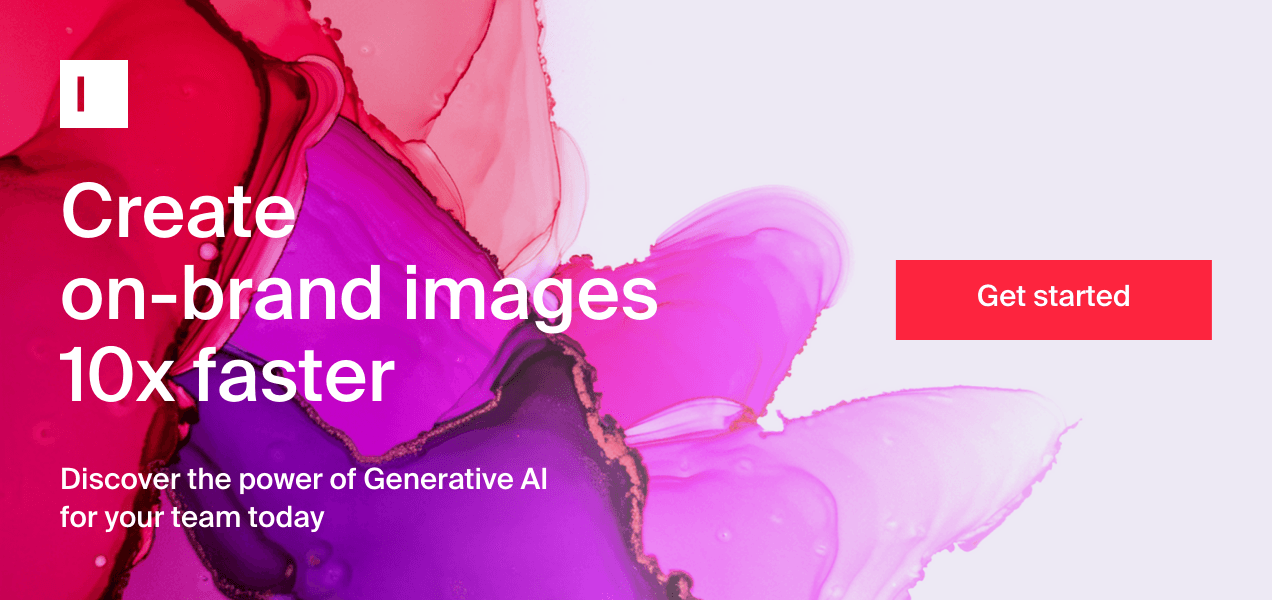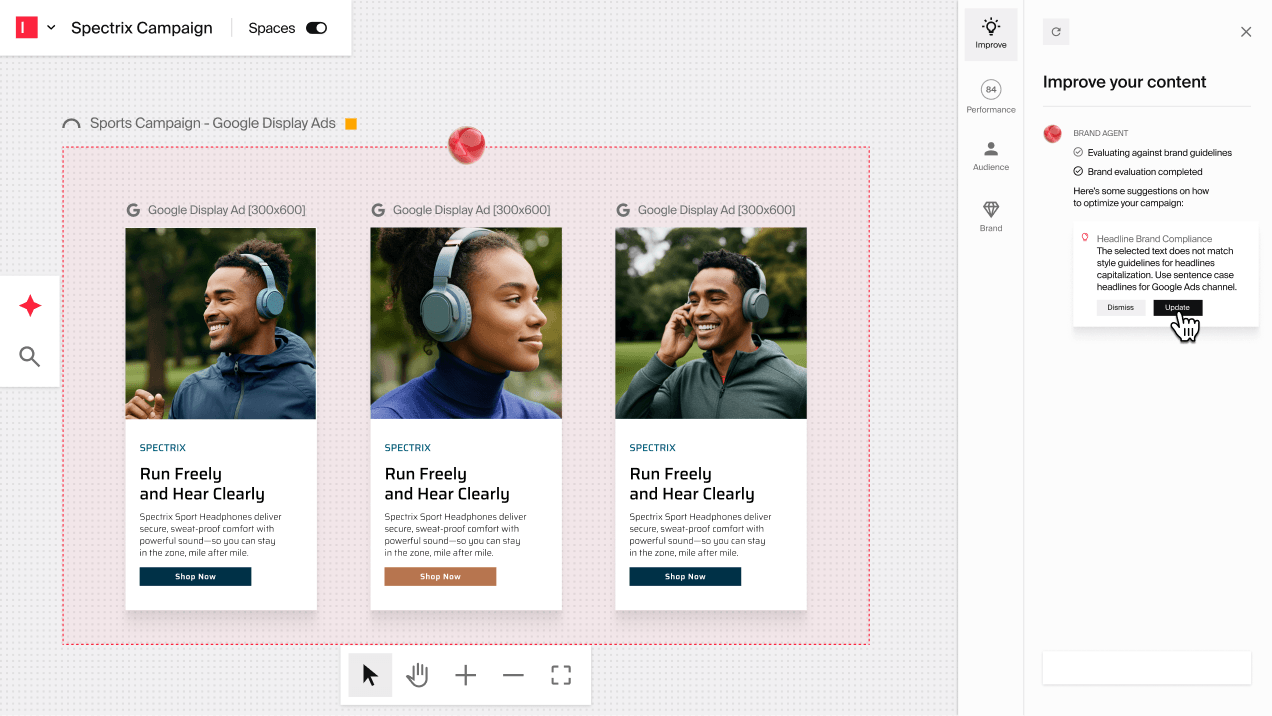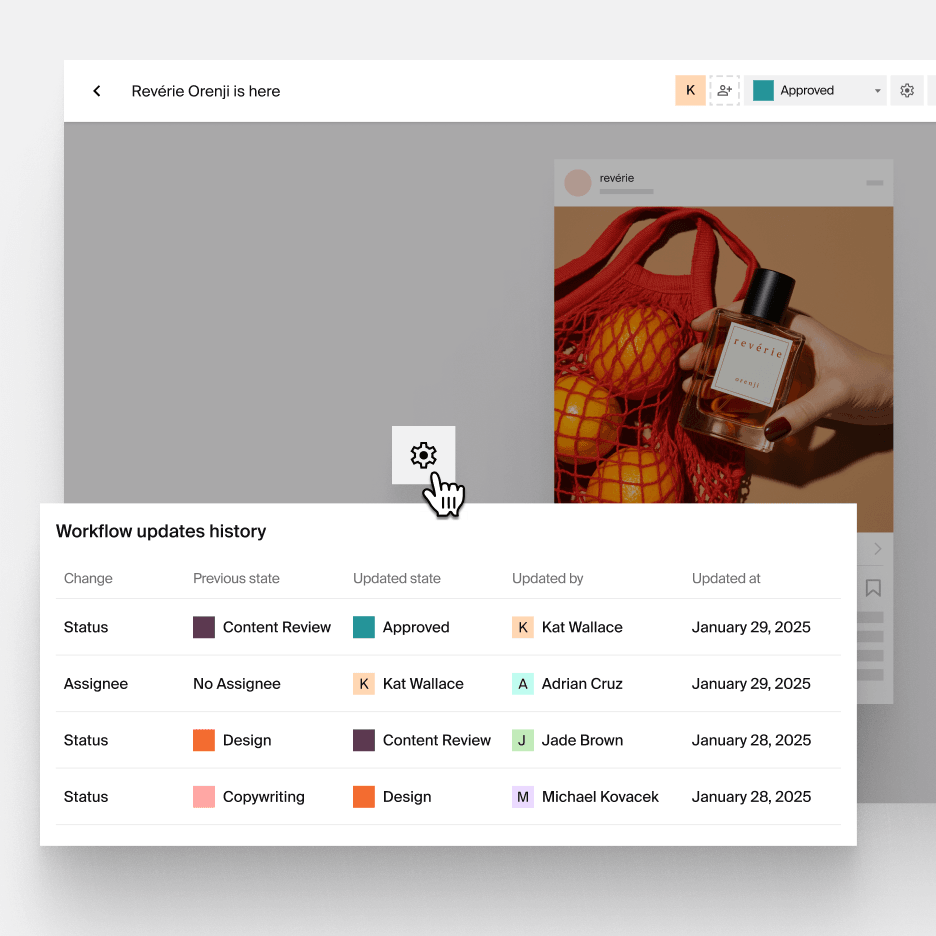AI at Work
Content Style Guide: How to Create an Effective Brand Guide for Text and Visual Style

Bryan Kitch · Senior Content Marketing Manager
June 25th, 2025 · 9 min read

As one of the ‘3C’s’ of branding, consistency (alongside clarity and coherence) is no small contributor to your long-term growth. Consistent human behavior creates trust and a sense of security; consistent branding helps build recognition, and, over time, solidify brand trust.
Your brand guide is your organization’s go-to playbook for how to represent your company to the world. Outside of marketing, it can also help customer service, sales, product development, and HR teams speak a shared language, and tell the same story.
The thing is, while a brand guide lays out your rules for consistency, people aren't always going to follow those rules, especially when multiple teams, departments, and external agencies are involved.
Without sufficient guardrails, things can start to fall apart, potentially diluting your identity and creating trust issues with discerning customers and investors.
What does it take to maintain a consistent brand?
What does it take to maintain a consistent brand?
Brand consistency not only requires a well-put-together brand style guide but also a reliable way to ensure that everyone sticks to it, across the board.
Here, we’re going to take a look at what the best brand guides have in common, and how forward-thinking companies (including those of enterprise scale, and in heavily regulated industries) are tackling the danger of deviating from their brand rules.
What should a brand guide include?
What are the obstacles to applying the brand guide consistently?
How Typeface solves the problem of inconsistent branding

What should a content style guide include?
1. Brand purpose, story, and personality
As a tactical document, the brand guide outlines the rules to follow when creating content. Prefacing the rules with necessary context helps teams understand and remember guidelines more easily. It consists of:
Brand purpose:
Why your organization exists and what its core objective is
Its guiding principles
Its target audience
Brand story:
Why your organization was established
The impact your organization hopes to make
Brand personality:
How your organization expresses itself through its voice
Your visual identity
Your messaging style
For example, a financial services company that wants to sound empathetic and partnership-driven has to have compatible guiding principles in its brand guide. The brand guide will clarify (or reinforce) who they are to both employees and agency partners, and help keep tone of voice top of mind when creating content.
When people understand your brand purpose and personality clearly, it lets them tell better stories, and amplifies your brand’s human touch, and the result is more engagement (and better performance).

2. Visual identity components
Your logo, color palettes, typography, imagery, and overall aesthetic style make your brand recognizable. When tied to your personality or the type of products you sell, those visual markers shape how people view (and perceive) your brand.
In a noisy marketplace, consistent visual branding makes your brand easier to spot, remember, and trust. So, providing design teams with complete clarity around your brand’s visual elements is crucial.
This means defining and where possible, visually illustrating the following parameters and guidelines:
Logos: Colors, fonts, minimum logo size, clear space, and placements on marketing materials
Color palettes: Primary colors, secondary colors, grayscale colors illustrated through swatches (visual color sample, color name or label, color codes)
Icons: Standards for acceptable icons and their size and color requirements
Typography: Approved fonts and font styles, weight, sizing, and spacing
Motion: When communications need motion, images in motion, and typography in motion

3. Text style guidelines
Although a little more abstract than visual identity, written and spoken words are just as critical in promoting brand consistency in marketing, sales, and customer-facing communications.
What you write and say impacts how people view your brand as a whole, and affects customer decisions, in both B2B and B2C. Don’t forget that, in a world (too often) filled with jargon and cliché, your buyers are human, and your verbal identity has to support human connection and relatability.
That’s why you need clearly defined writing conventions to maintain a consistent brand experience.
These include:
Brand voice and tone:
Your brand’s voice conveys who you are and stays constant
Tone of voice (TOV) is how you sound depending on the channel, audience, or communication context (e.g., more casual on Instagram, more professional on LinkedIn, and more empathetic in customer support emails)
Grammar and punctuation:
Spelling (e.g., web page, not webpage)
Punctuation usage (e.g., “Don’t use a space before or after an em dash”)
Capitalization (e.g., “Use sentence-style capitalization in all titles and headings except proper nouns, including brand, product, and service names”)
Sentence and paragraph structure (e.g., “short and snappy sentences” and “3-4 line paragraphs”)
Language (e.g., “Our preferred spelling style is American English”)
Word choice (e.g., “Avoid saying “leverage” and replace it with “use” or “utilize”)
Dates (e.g., “May 6, 2025)” and numbers (e.g., “use commas in large numbers”)
Typography:
Preferred fonts
Usage of bold and italics
Typographic hierarchy (which fonts/styles for headers vs. body text, etc.)

Why brand consistency breaks down (and how Typeface solves these problems)
The situation: Most enterprises store brand guidelines in static PDFs that are hard to maintain and rarely referenced in the fast-paced flow of content creation.
These static documents are difficult to update, and it's unrealistic to expect every marketer, agency partner, or regional team to follow them perfectly, especially without centralized review.
AI changes that: Instead of relying on manual checks or outdated files, AI can turn your brand guidelines into a dynamic, living system.
Agents can automatically apply tone, voice, and formatting rules as content is created, flag inconsistencies in real time, and ensure brand integrity at scale, no matter who's creating the content.
How AI-human collaboration on brand alignment looks in the Typeface platform
Brand management and content quality control are core to our visual and text generation capabilities. To start off, centralize your brand guidelines in Brand Hub, which makes them easier to apply, monitor, and update. Then, easily stay on-brand with two built-in checks:
Apply your Brand Kit during content creation
Sit back and let Brand Agent catch and correct anything that’s off-brand
What is a Brand Kit?
Your Brand Kit is a centralized collection of your brand guidelines from PDFs, Word documents, or digital hubs. It’s organized into these sections:
Visual identity components: Logos, color palettes, fonts, and image styles (e.g., flat illustrations, vector patterns, or any signature brand style)
Text style guidelines: Tones, restricted phrases, and brand values
Brand rules
Editorial (e.g., emoji usage, Oxford commas, grammatical person)
Compliance terminology (e.g., no health claims, no guarantees)
Brand voice (the voice you use to communicate on marketing channels, for example, a casual voice for Instagram and a formal one for LinkedIn)
How do you create your Brand Kit?
Set it up manually (watch our webinar on creating a Brand Kit on Typeface)
Upload your brand guidelines document. Brand Agent will extract the rules and organize them into the above sections.
To teach the AI your image styles and channel-specific voices, simply upload relevant images and content URLs as training input.
If you own multiple brands, you can create a Brand Kit for each alongside an enterprise-level kit. Teams can move across kits to launch brand-specific campaigns fast and in line with standards. Your editors handle the last-mile checks, with our Content Workflow Manager ensuring the process is smooth and transparent.

What is Content Workflow Manager?
Content Workflow Manager creates review touchpoints within content workflows. Team members can easily create content, get feedback, secure approvals, and publish campaigns — all in one place.
You can build custom workflows that match your review requirements. Content Workflow Manager automatically routes content to the right reviewers at the right time, keeping projects and campaigns moving and giving everyone visibility into each item’s status.
Brand Kit, Brand Agent and Typeface's robust content lifecycle workflows activate guardrails and enhance on-brand content creation to ensure consistency and alignment with your brand identity.

Typeface in action: Fortune 500 consumer packaged goods company scales content creation by 10x
The best way to understand how Typeface gives you the ability to create on-brand campaigns at a scale heretofore impossible is by seeing it in action.
With Typeface, a Fortune 500 consumer packaged goods (CPG) company has been able to increase their creative production by tenfold, building on-brand written and visual content that is automatically evaluated against global guidelines, and refined based on audience, previous campaigns, and brand intelligence.
Protect your brand identity with AI-powered governance
A brand guide is a tactical but static document that doesn’t go the full distance in enforcing visual and verbal consistency. Typeface’s AI brand management is the perfect foil to the brand guide you painstakingly build and hope to uphold.
Make it easier for everyone to create content that contributes to a recognizable and trustable identity. Try Typeface for free or talk to sales.

Share
Related articles

AI at Work
Content Quality Control in AI Marketing: Enterprise Governance and Best Practices for Brand Integrity

Mohit Kalra · Chief Information Security Officer
May 6th, 2025 · 13 min read

AI at Work
AI Brand Management: How to Maintain Brand Consistency With AI Image Generators

Neelam Goswami · Content Marketing Associate
April 2nd, 2025 · 12 min read

AI at Work
How to Use AI Brand Voice Generator to Preserve Channel-Specific Voices

Ashwini Pai · Senior Copywriter
February 20th, 2025 · 7 min read